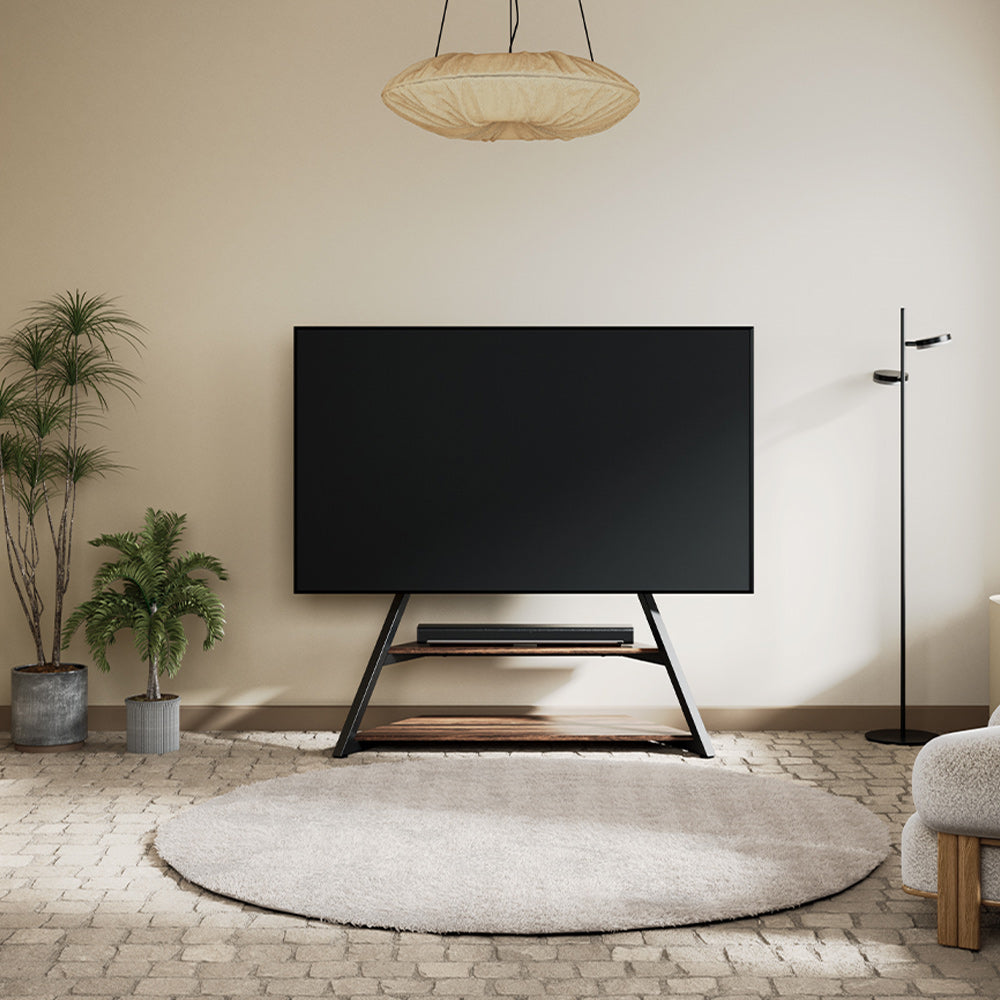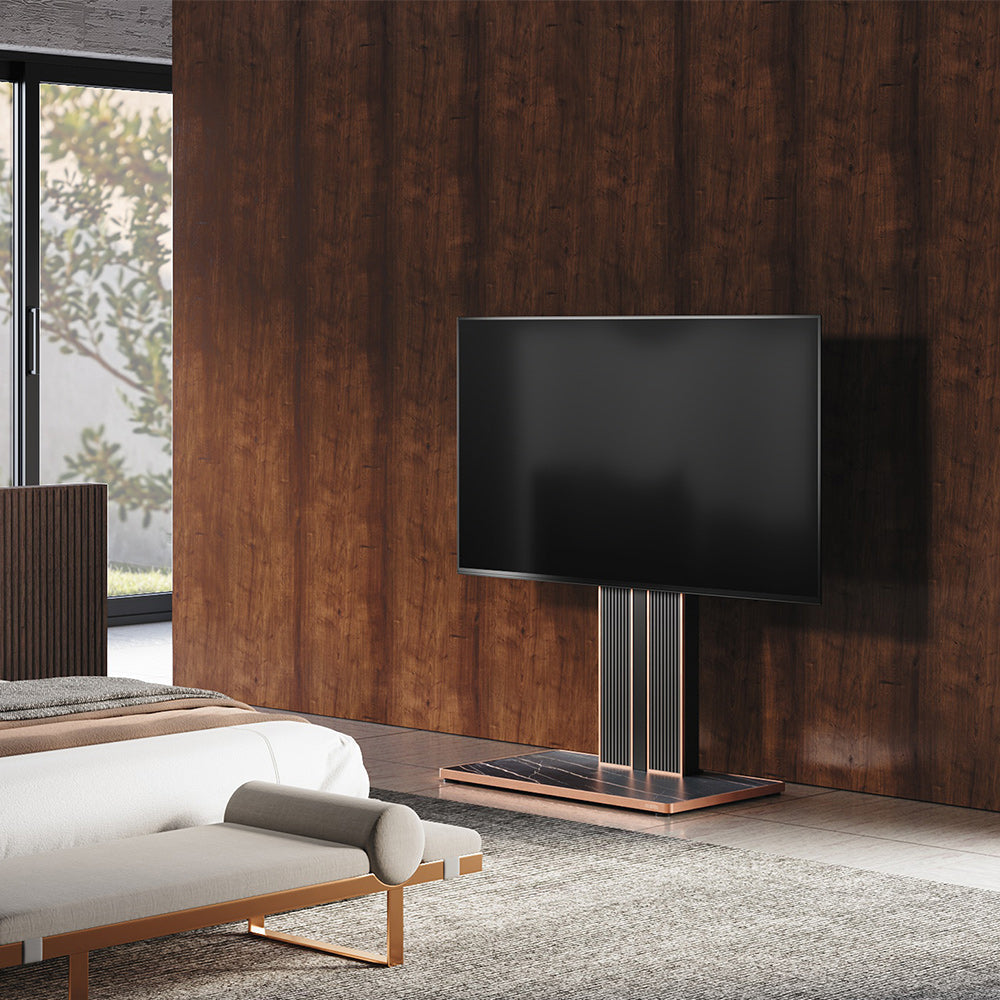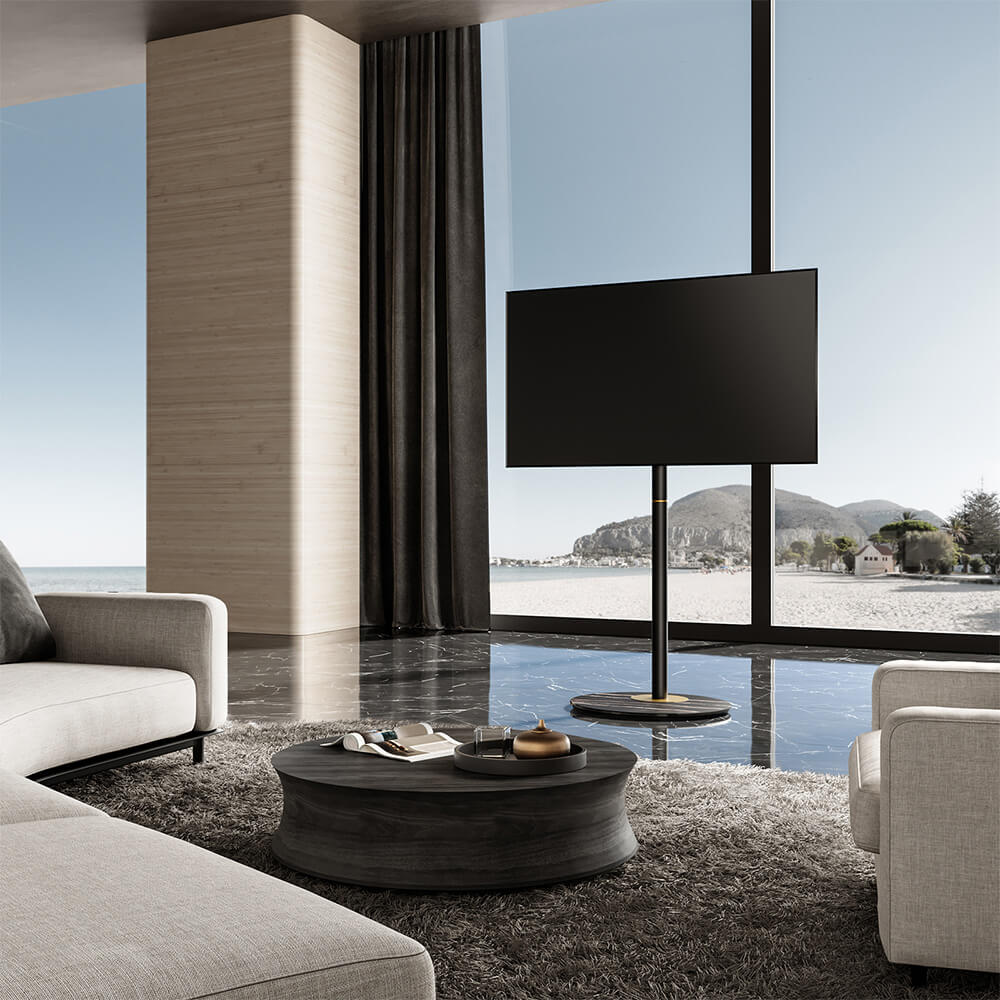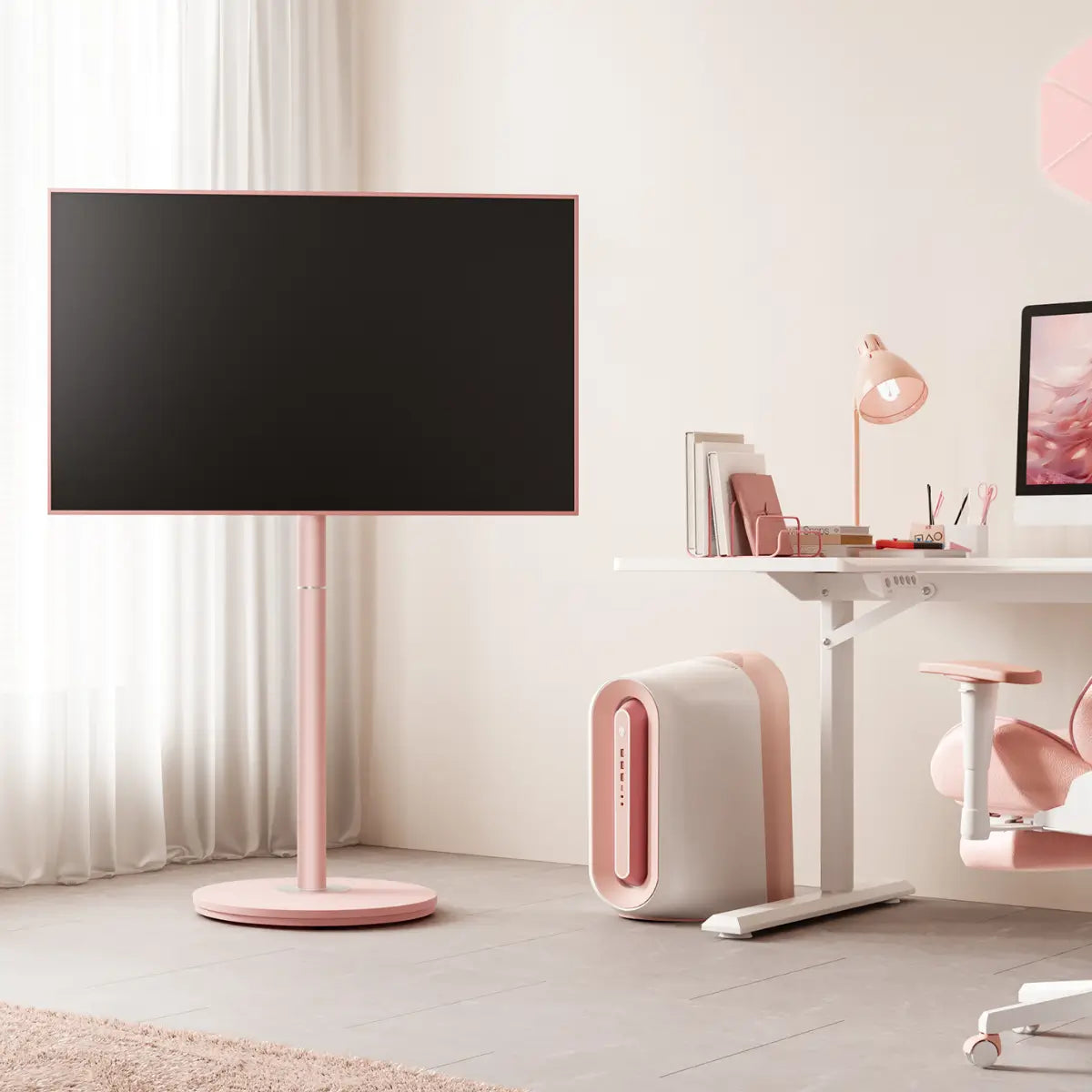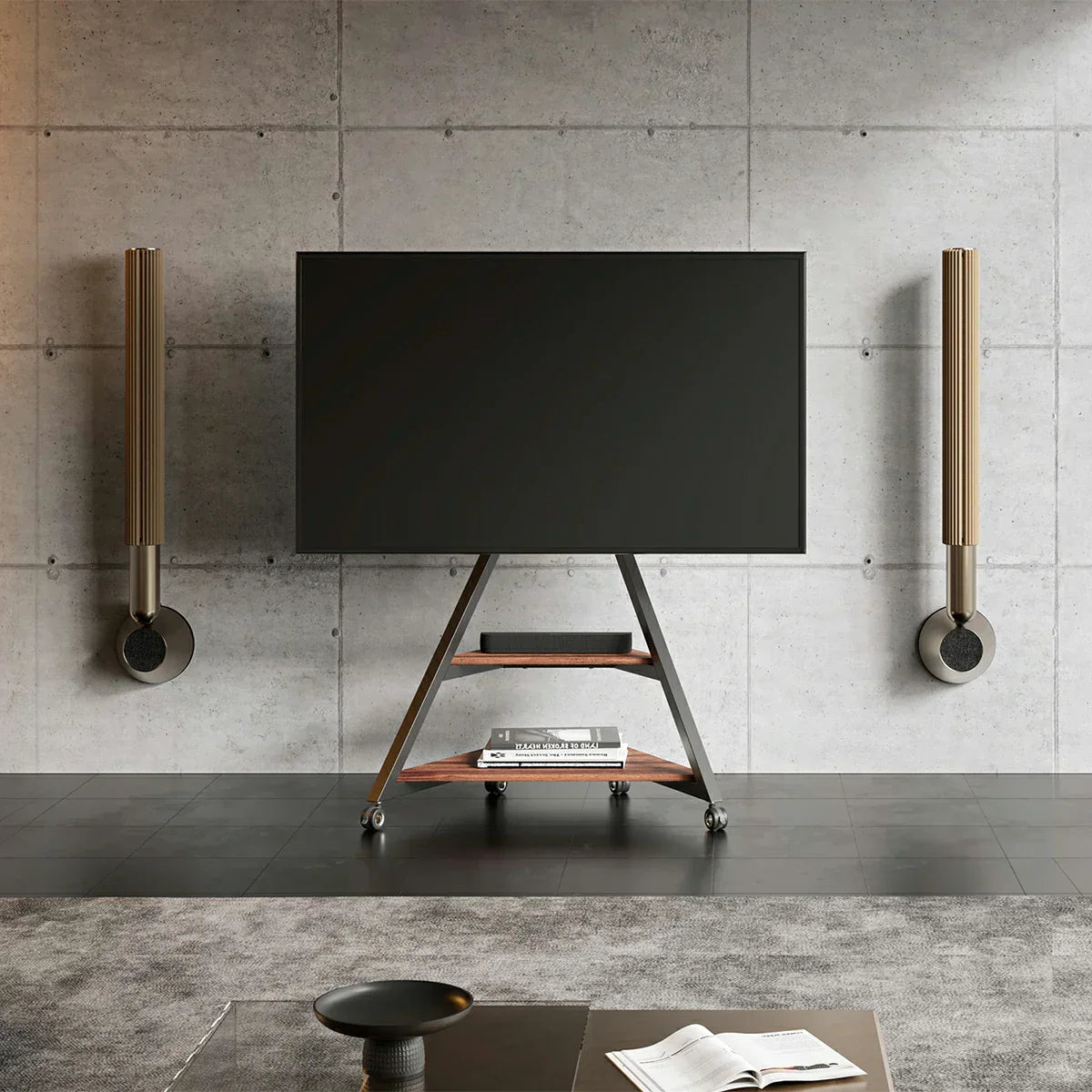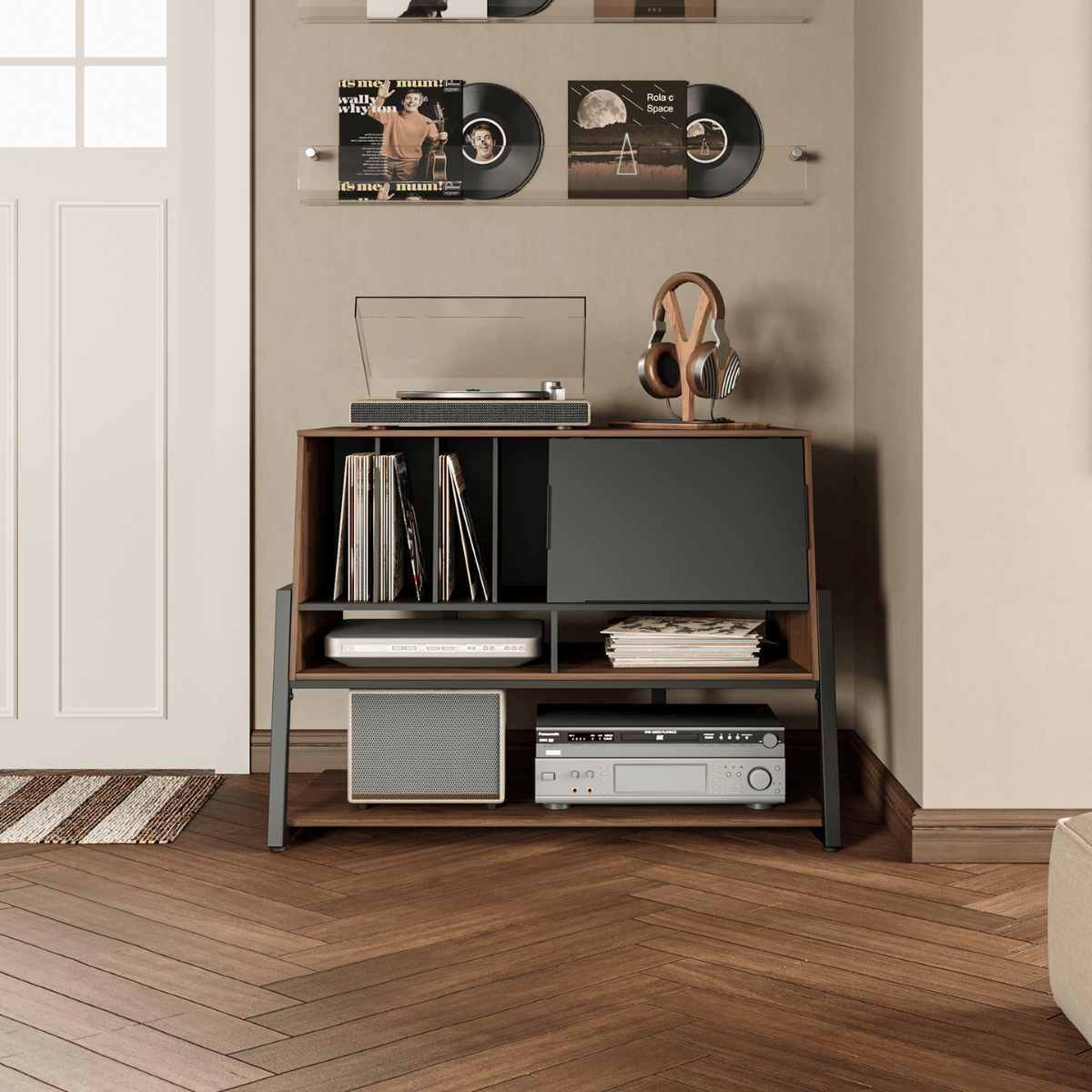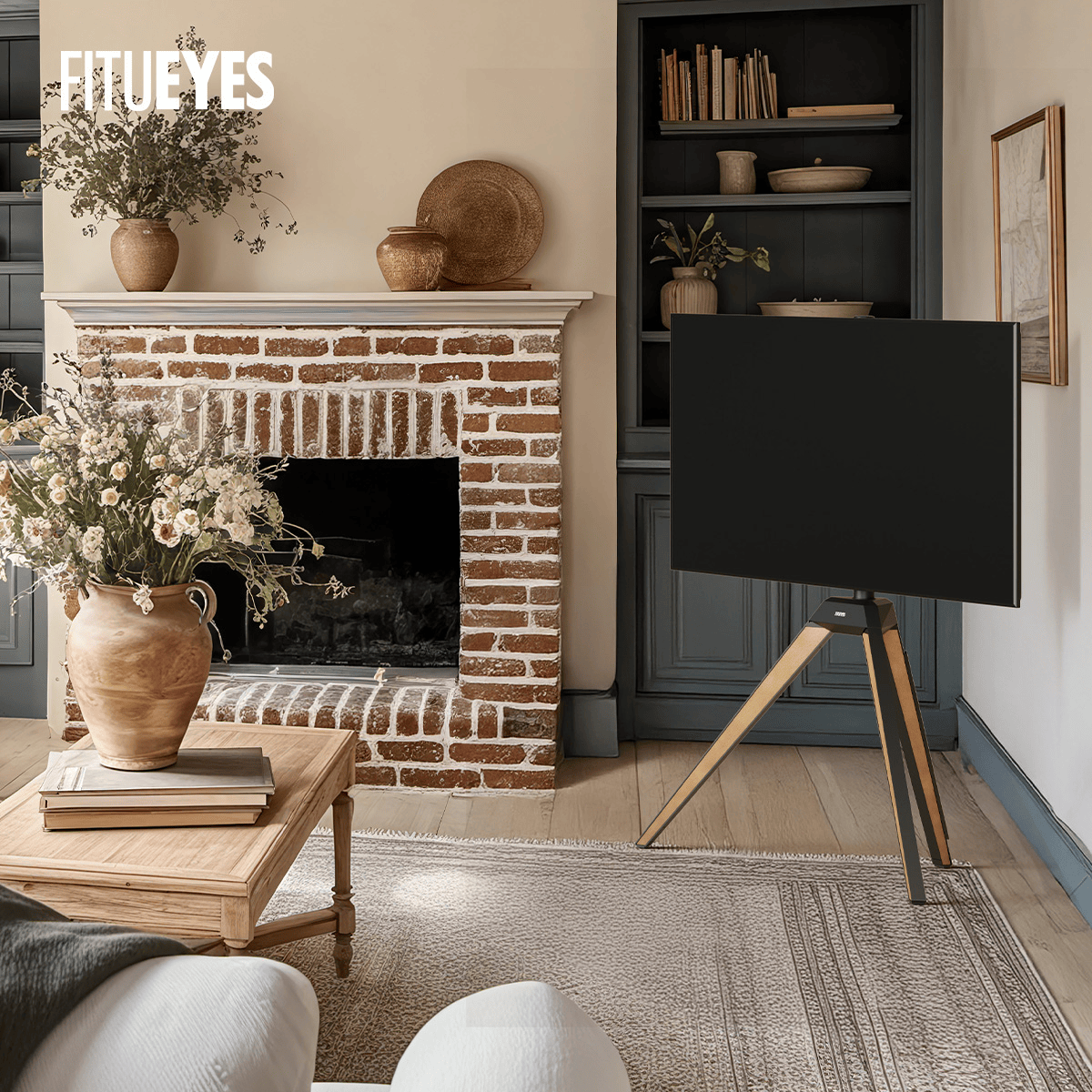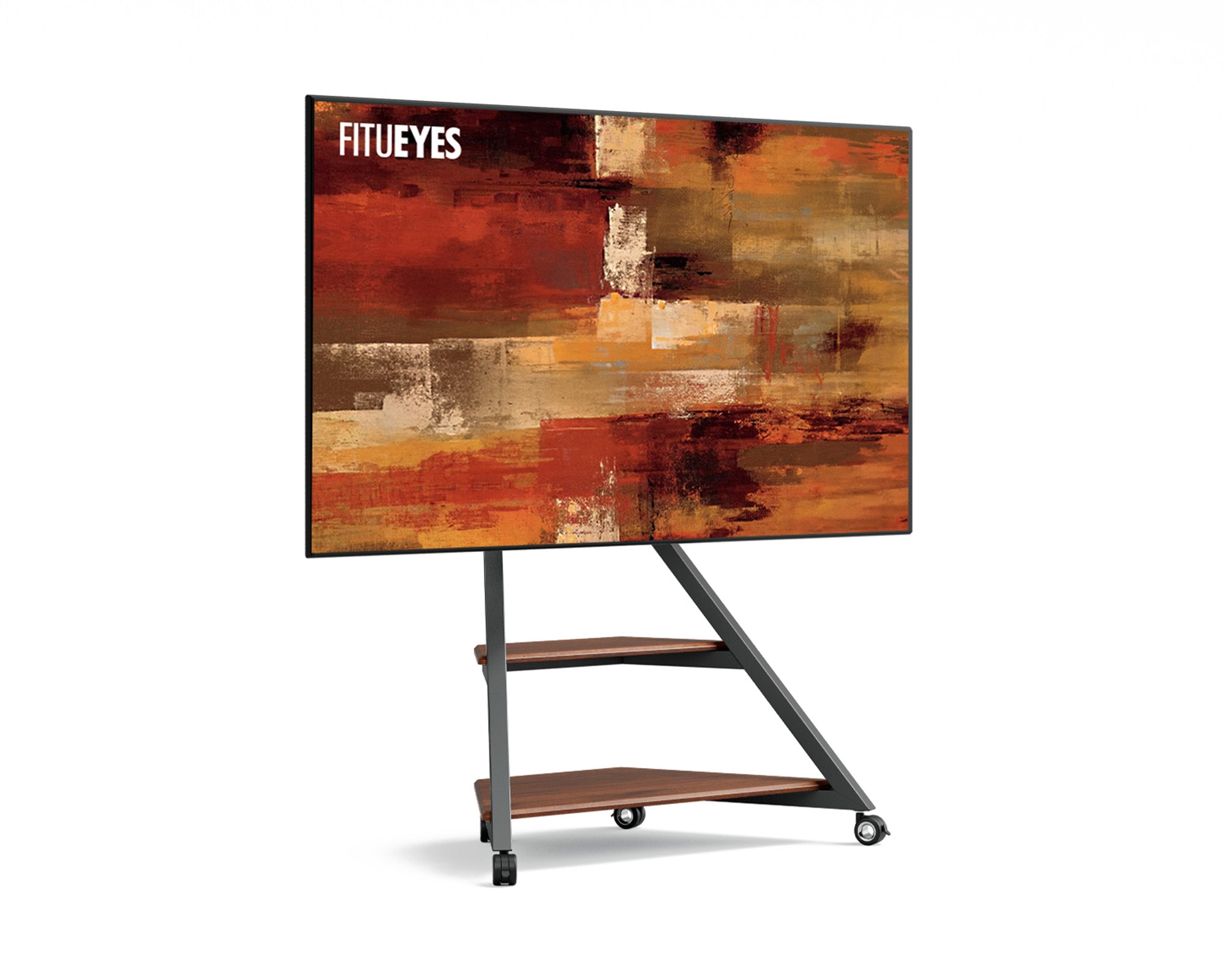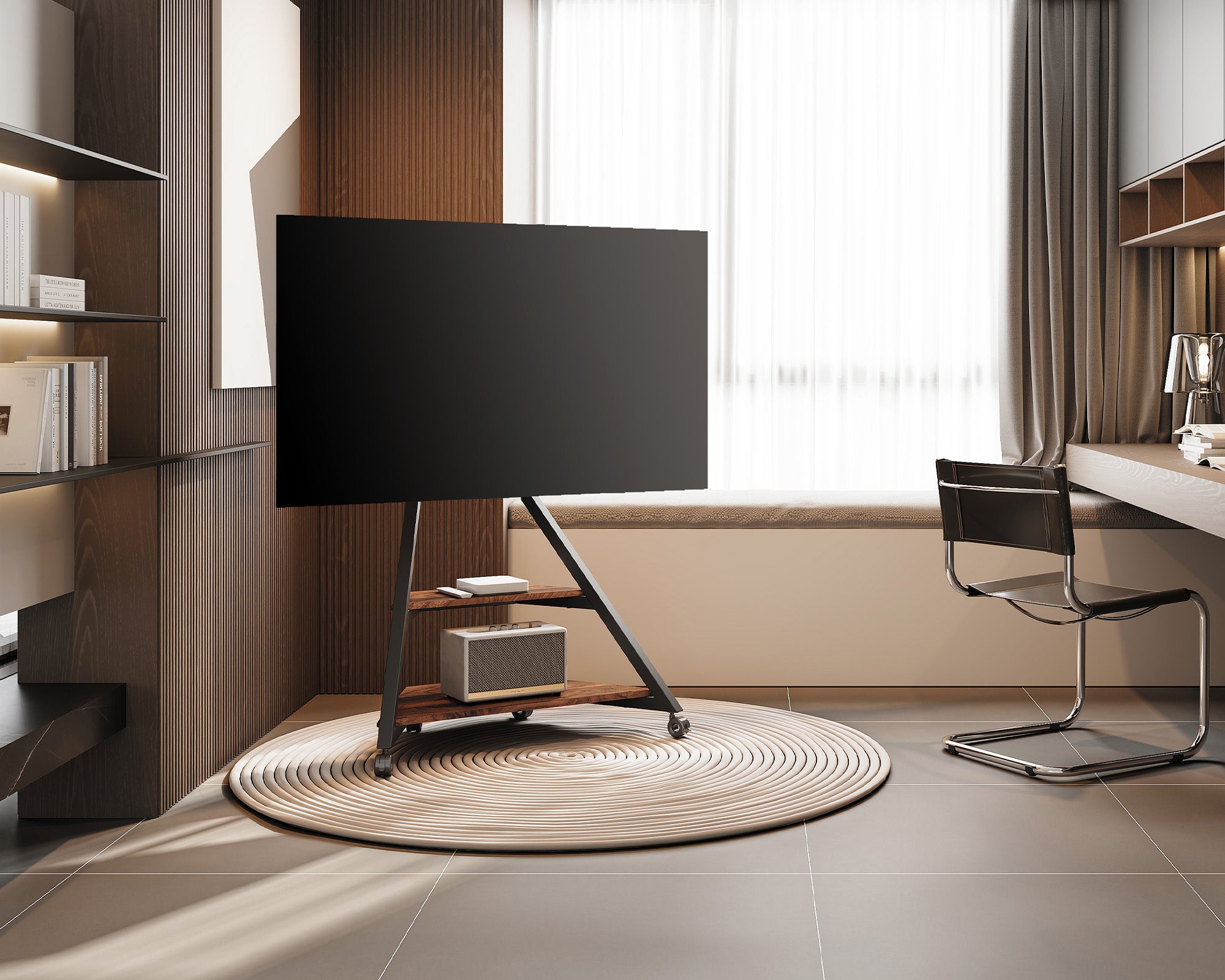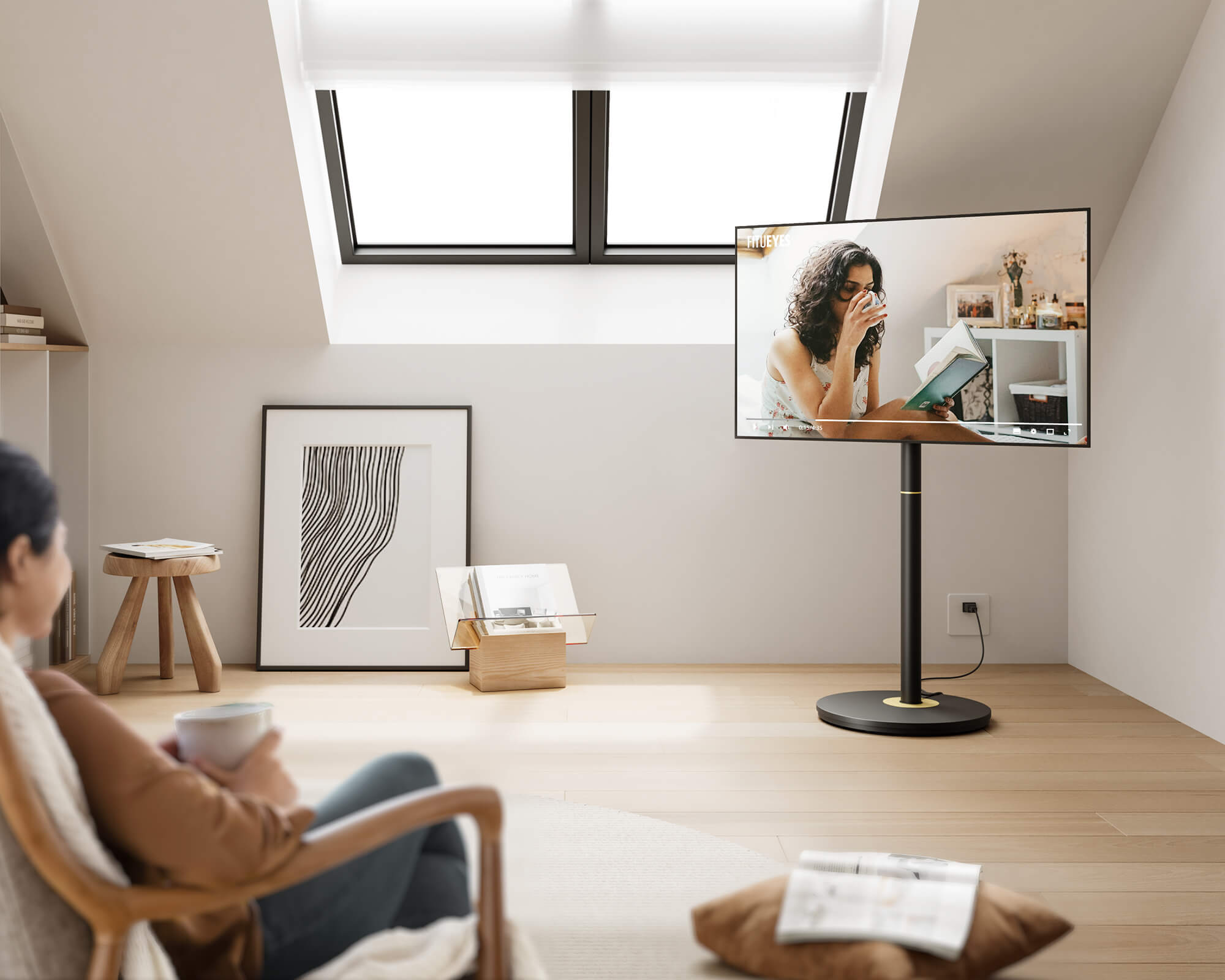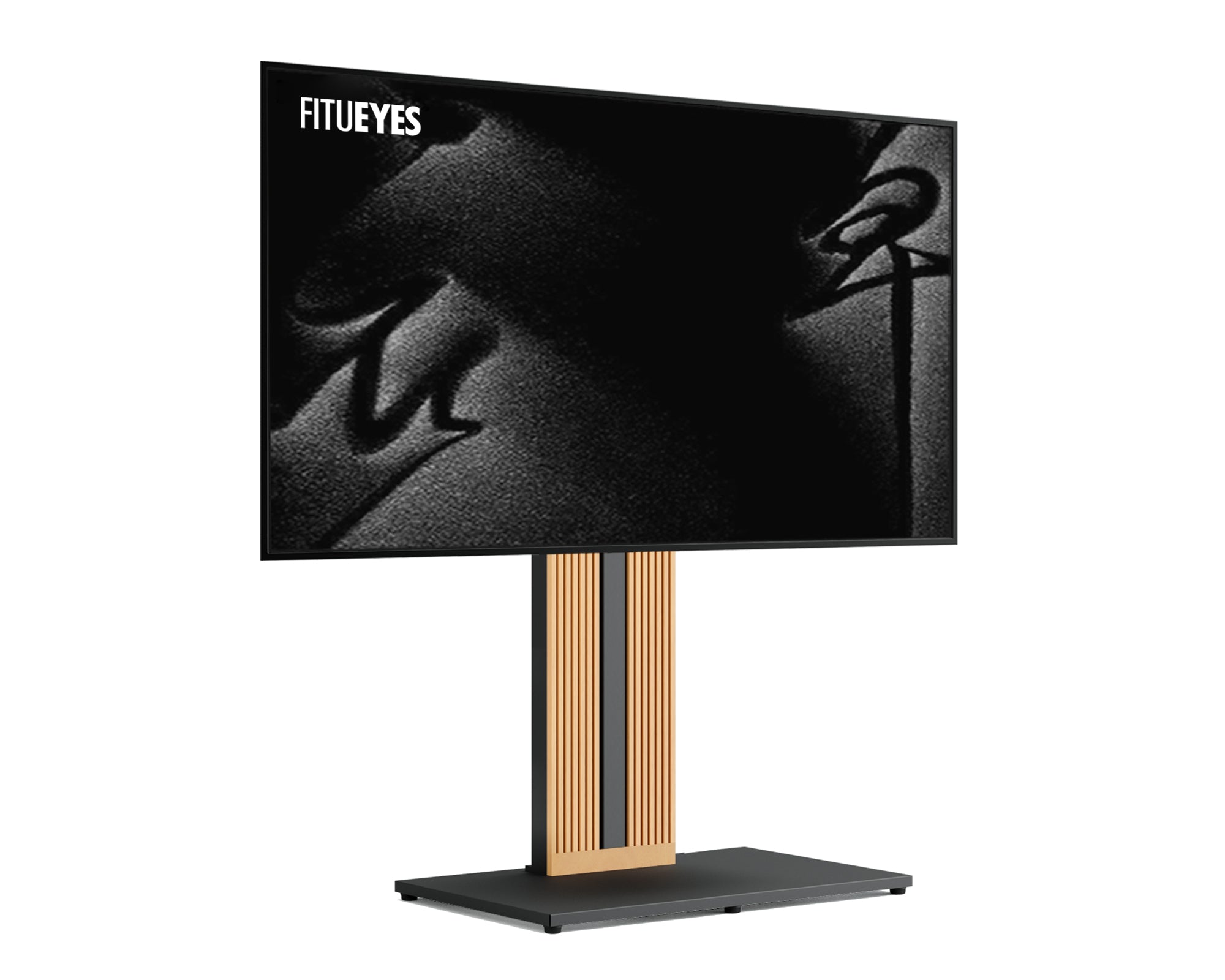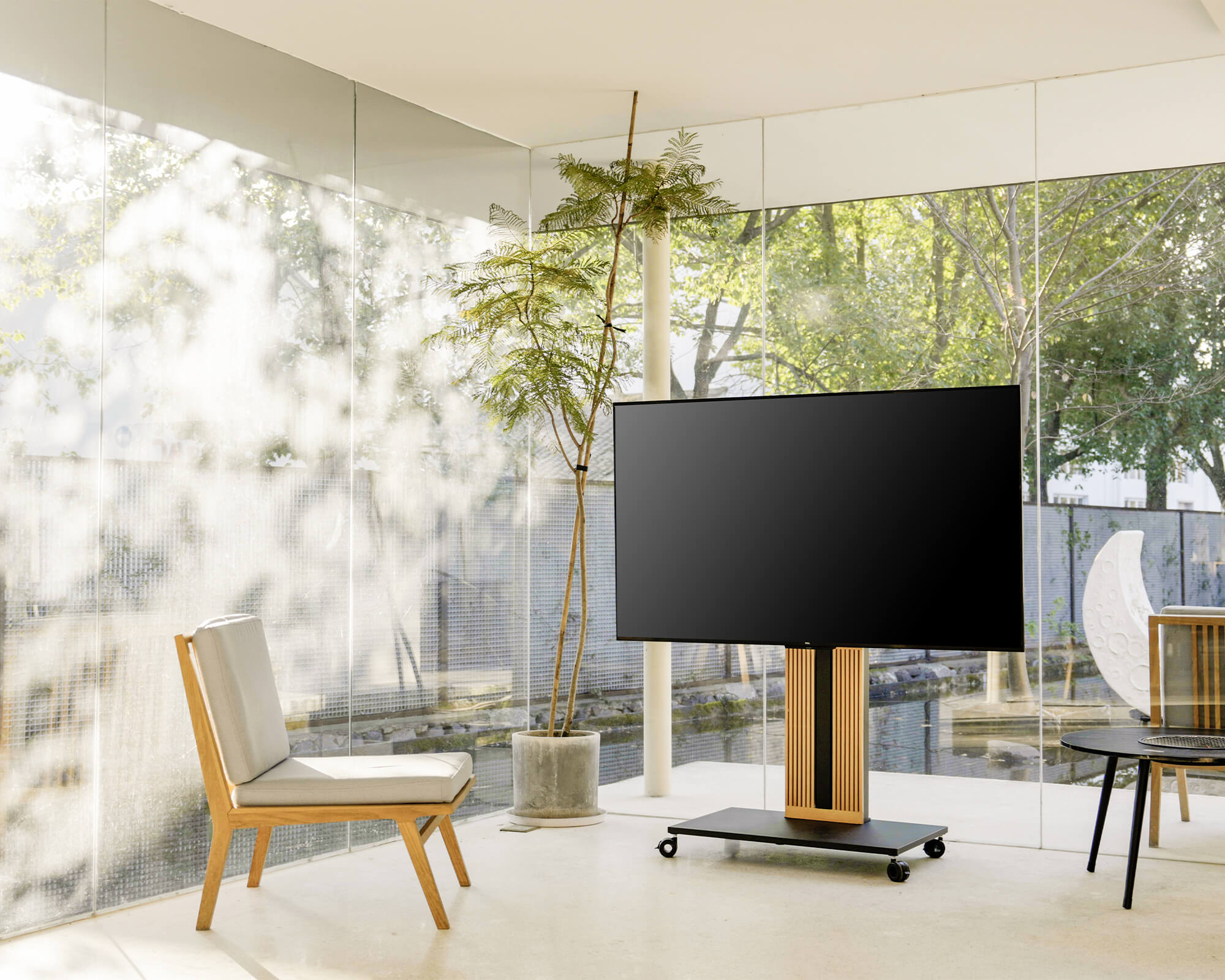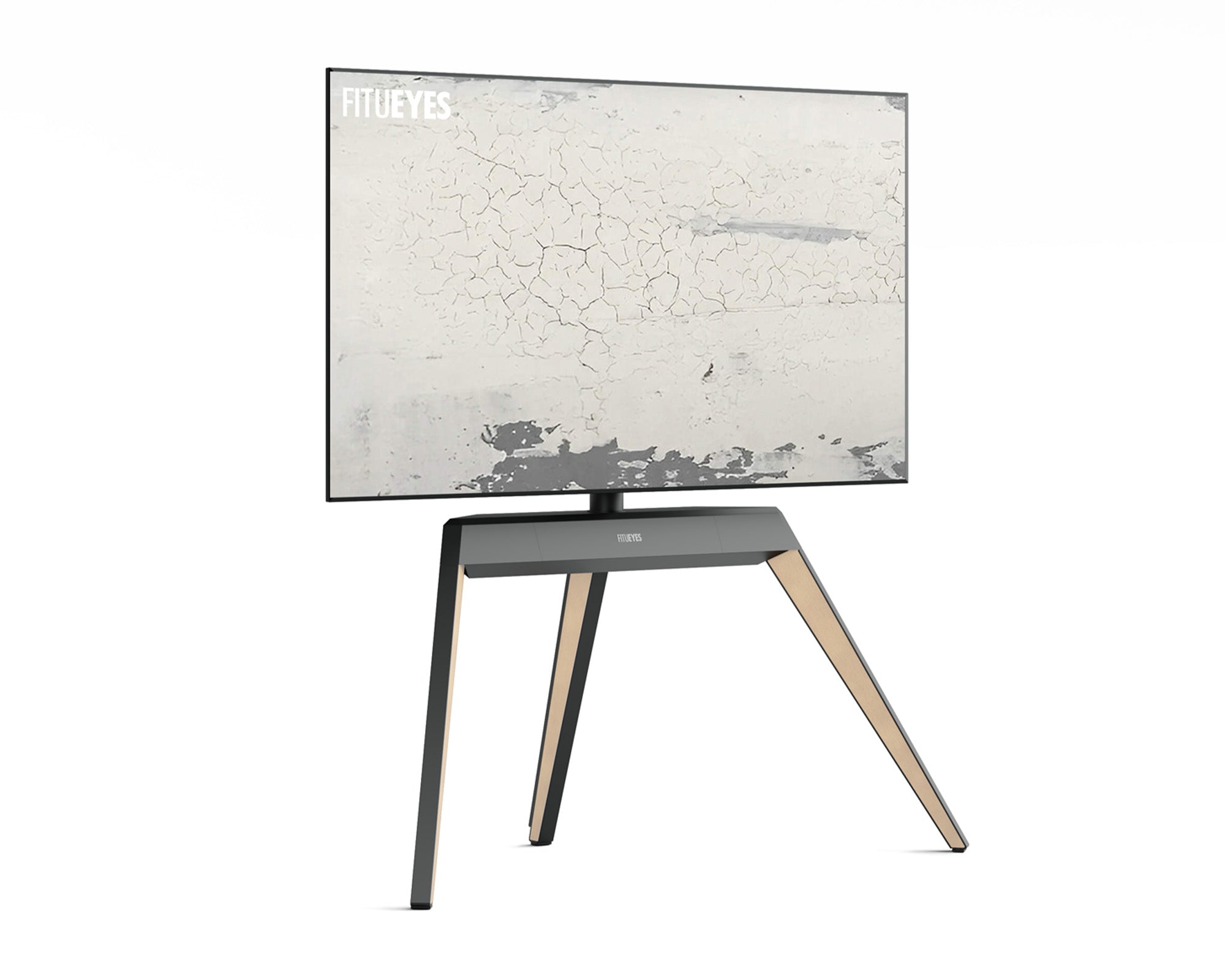A TV stand is great if you want extra storage and easier cable access, while a wall mount is perfect for saving space and creating a modern, clean look. Both have their pros and cons, so it's important to think about your room layout, design style, and how you use your TV. In this guide, we’ll help you decide which option is right for you.
1. Space Efficiency: Which Option Saves More Room?
Wall Mounts for Space Efficiency
If you're looking to save floor space, wall mounting is often the best choice. Mounting your TV on the wall frees up valuable space, making your room feel more open and less cluttered. This is especially helpful for users in small apartments or compact living rooms.
Tip: If your room is limited in space, wall mounting can be a game-changer. Wall-mounted TVs also look sleek and modern, enhancing the minimalist aesthetic.
Space-Saving TV Stands for Your 65-Inch TV
If you're concerned about space, a 65 inch TV stand can be the perfect solution. A well-designed TV stand not only provides the necessary support for your TV but also offers storage solutions for media devices, DVDs, and gaming consoles. For those with limited room, corner TV stands can be a great option to optimize space and give your room a neat, organized look.
Tip: Check out the Master V2 FT65 Corner TV Stand, which is specifically designed for TVs up to 65 inches and can save valuable space in smaller rooms.
2. Aesthetic and Design Preferences: Which Fits Your Style?
Minimalist, Modern Look with Wall Mounts
For those seeking a clean, sleek aesthetic, a wall-mounted TV provides a minimalist appearance that integrates seamlessly into modern spaces. It gives the TV a "floating" look and eliminates the clutter of a traditional TV stand.
Tip: Wall mounts are perfect for creating a modern, uncluttered vibe in your living room, especially when paired with cable management systems to hide wires.
Traditional Design with TV Stands
If you're drawn to traditional or rustic styles, a TV stand might be the better fit. TV stands come in various designs, from wood to metal, and can offer additional decor elements, such as shelves and drawers for storing media devices, books, and other accessories.
Tip: TV stands provide a more dynamic visual presence, and their added storage capacity makes them ideal for those who prefer a more functional setup.
Related Reading: Creative TV Placement Ideas Beyond Wall Mounting Options

3. Viewing Comfort: Finding the Best Height and Angle
Adjustable Wall Mounts for Ergonomic Viewing
One of the key advantages of wall mounting is flexibility. With adjustable tilting and swiveling wall mounts, you can customize the TV's viewing angle and height to achieve the best ergonomic position for your couch or chair.
Tip: When mounting your TV, ensure it's at eye level when seated for comfortable viewing. Adjustable mounts offer great flexibility, especially if you have multiple seating areas.
TV Stands for Adjustable Viewing Heights
Many modern TV stands also come with adjustable heights, allowing you to set the TV at the perfect level. These stands may also include tilting mechanisms to help angle the TV for an optimal viewing experience.
Tip: If you're not sure about the height, choose a stand with adjustable height options for more flexibility.
4. Safety and Stability: Which Option is Safer?
Wall Mounts for Stability
Wall mounts are often considered more stable because they secure the TV to the wall, eliminating the risk of the TV tipping over. This is particularly important for homes with children or pets. When properly installed, wall mounts offer high security and stability.
Tip: Ensure that your wall can support the weight of your TV before mounting. Use high-quality installation hardware or hire a professional to ensure a secure mount.
TV Stands with Anti-Tip Features
If you prefer a TV stand, look for one with anti-tip features, such as brackets or straps that secure the stand to the wall. This provides extra protection, especially in homes with young children or active pets.
Tip: Choose heavy-duty stands made of durable materials like solid wood or metal to improve stability and minimize the risk of tipping.

5. Ease of Installation: DIY or Professional Help?
Wall Mount Installation
Wall mounting can seem challenging, especially for those unfamiliar with installation. While many mounts come with instructions, DIY installation may still be difficult for some users. Professional mounting services are available but can increase costs.
Tip: If you're not comfortable with the installation process, consider hiring a professional installer. For those with basic tools, DIY wall mounts are a great option with easy-to-follow instructions.
TV Stands: Easier Installation
TV stands are usually easier to set up. Most models come with clear instructions, and many are pre-assembled, saving time and hassle. Even DIY stands are generally quick to assemble, with fewer technical aspects than mounting a TV on the wall.
Tip: If you prefer an easy setup, go for a TV stand with minimal assembly or opt for a pre-assembled model.
6. Budget: Which Option Fits Your Wallet?
Affordable Wall Mounts
Wall mounts are generally cheaper than TV stands. However, if you need to hire a professional to install the mount, this will increase the total cost. Some high-end mounts offer extra features like tilting and swiveling, which can be more expensive.
Tip: If you're on a budget, DIY installation of a wall mount is the most cost-effective solution.
TV Stand Pricing
TV stands range in price, with budget models available for as little as $50, and high-end units reaching several hundred dollars. The price often depends on materials, design, and added features like storage or cable management.
Tip: If you're looking for extra features like storage and cable organization, investing in a higher-end TV stand might be worth the extra cost.
7. Long-Term Flexibility: Will Your Setup Meet Future Needs?
Flexibility with Wall Mounts
Wall-mounted TVs are relatively fixed once installed. If you upgrade to a larger TV in the future, you may need to replace the wall mount to accommodate the new TV size.
Tip: Look for universal mounts that can fit a variety of TV sizes to make future upgrades easier without needing a new mount.
Modular TV Stands for Future Upgrades
TV stands offer more long-term flexibility, especially modular units that can be adjusted or expanded to fit new devices or future TV sizes.
Tip: Choose a modular stand with adjustable shelves and compartments to accommodate any upgrades to your TV or entertainment devices in the future.

Frequently Asked Questions (FAQs)
1. Can I mount my TV if I have drywall?
Answer: Yes, but it depends on the wall mount and the TV weight. You need to ensure that you are securing the mount into wall studs for maximum stability. If you're unsure, professional installation can ensure the job is done correctly.
2. How do I ensure my TV stand is stable?
Answer: Choose a TV stand with anti-tip features such as brackets or straps that secure the stand to the wall. Additionally, ensure the stand is made from solid materials (wood or metal) to ensure stability.
3. Which option is better for small spaces, a TV stand or wall mount?
Answer: Wall mounting is typically the best option for small spaces, as it frees up floor space and gives the room a more open feel. However, if you need storage, a low-profile TV stand could be a good compromise.
Conclusion
Choosing between a TV stand or a wall mount depends on your specific needs and preferences. If you want to save space, achieve a modern aesthetic, and reduce clutter, wall mounting might be the right choice for you. If you're looking for additional storage, flexibility, and ease of setup, a TV stand could be the better option. By considering factors like space, aesthetics, safety, budget, and future flexibility, you can confidently make the best decision for your TV setup and lifestyle.









